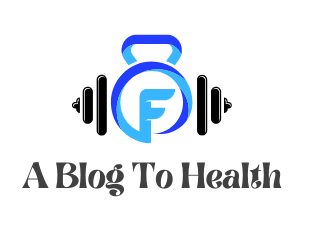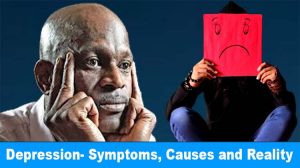The human body is one of the most complicated machines existing on planet earth. Naturally, we all feel sad, low or moody from time to time but the feelings of some people last for days, weeks, months or even for years. Many people want to know what is depression. Depression is one of the most common but serious medical illness. It negatively affects how a person feels, he thinks and how he acts.
Depression leads to feelings of extreme sadness, disappointment, loss of interest in normal life and many other things. But the good news is depression is a treatable disease. Depression can cause several emotional and physical issues and can also decrease your ability to perform normally at home and at work.
The symptoms of depression can vary from mild to a serious stage. Some of the symptoms of depression are following.
- Depressed Mood
- Feeling Extremely Sad
- Appetite Changes
- Weight Loss Or Weight Gain
- Too Much Sleeping
- Sleeping Troubles
- Increased Fatigue
- Energy Loss
- Slowed Speech And Movements
- Enhanced Purposeless Physical Activity
- Suicide Or Death Thoughts
- Feeling Guilty Or Worthless
- Unable To Make Decisions
- Difficulty Thinking And Concentrating
Depression affects 1 in 15 adults (6.7%) in any given year and 1 in 16 people (16.6%) may experience depression in their life. This illness can strike at any time but it occurs during the late teens to mid-20s. Female are more likely than male to suffer from depression.
Several studies proved that one-third of women can experience a serious depression stage in their lifetime. In this brief article about depression, we will take a look at what is depression, symptoms, causes, and reality.
What is Depression?
What is the Difference Between Depression & Sadness or Grief?
But sadness and depression are two different things. Grieving is a natural process and unique or different to each person. It may share few features of depression but not all. Both depression and grief can involve extreme sadness and withdrawal from routine activities. But both conditions are different in many ways.
In major depression, interest (pleasure) or mood are reduced for most of 2 weeks. While in grief condition, painful feelings come in the form of waves, mostly intermixed with positive memories of the lost one.
In depression, self-loathing and worthlessness feelings are common. On the other hand in grief, self-esteem is commonly maintained.
In some people, the death of a loved one can cause major depression. The major disaster, job loss or physical assault victim are also some depression affected people.
When depression and grief co-exist, grief is more dangerous and can last longer than grief without depression. Besides a few similarities, depression, and grief are two different terms. Differentiating between these two conditions can aid people to get support, help or proper treatment.
What is Depression- The Causes
- Personal Factors
- Family History
Depression can be genetic and may run in families. Such people have increased genetic risk of getting depression. But it doesn’t mean that if you have parents or close relatives affected with depression can automatically lead you to depression. Personal factors and life circumstance have a large impact on this illness.
Personality
Various people can suffer from depression due to their personalities such as if they worry a lot, perfectionists or a person with low self-esteem.
Serious Medical Illness
The worry and stress of coping with severe illness can cause depression. The case can be more severe if a person is dealing with long-term chronic pain and management.
Drug and Alcohol Addiction
Drugs and alcohol both are dangerous for your health and can lead to depression also. Most people with depression have drugs and alcohol issues.
Life Events
Health researches proved that continuous problems, uncaring relationship, an abusive relationship, loneliness or long-term isolation or prolonged work stress can cause severe depression. Whereas recent events like losing a job or such events can boost depression due to previous negative experiences or personal factors.
Changes in the Brain
Countless researches have been conducted on this complex part of the depression but still, there are no perfect answers found. Depression is not just a chemical imbalance result. It is complicated and there are several causes of depression. Factors like severe life stressors, genetic vulnerability, intake of substance (like drugs, alcohol etc) and many other medical conditions may affect the function of your brain in which it regulates your moods.
Many modern antidepressants effect on the brain’s chemical transmitters (serotonin and noradrenaline) which convey a message between brain cells. This is how medications help to treat severe depression. Another way of treatment is psychological therapy.
Proper treatment helps to stimulate the new nerve cells growth in circuits that regulate the mood. It plays a crucial role in recovering from more serious episodes of depression.
Different Types of Depression
Major Depression
Major depression is also known as clinical depression, unipolar depression, major depressive disorder or simple “depression”. It consists of interest loss, low mood and lack of interest in usual activities along with a few other symptoms. Such symptoms appear for at least two weeks. These symptoms badly affect important aspects of life such as social and work relationship. Depression can be described in three stages which are mild, moderate, severe, melancholic or psychotic.
Melancholia
This term is used for a server depression form where various other physical depression symptoms are present. The most prominent change in a person is that he starts to move very slowly. Depressed mood is another symptom which includes complete loss of interest in everything.
Psychotic Depression
Some depressed people lose touch with reality and suffer psychosis. Such type of depression involves hallucinations (hearing or seeing things that are not real), delusions (false beliefs that are not shared by other peoples), like believing they are evil or bad, or that they are being followed or watched. They can be paranoid too, feeling like everyone is against them or bad events occurring around them or that they are the illness cause.
Antenatal and Postnatal Depression
During pregnancy, women are most likely to suffer from which is called the antenatal or prenatal period and also in the following childbirth called the postnatal period. Another term perinatal describes the period covered by pregnancy and the very first year after the child’s birth.
The depression causes at this stage can be complicated. Such causes are the results of a combination of various factors. The days after the baby’s birth, most women suffer from the “baby blues” which is a normal condition related to hormonal changes. It affects about 80% of women. The baby blues or the general stress adjusting to a new baby or pregnancy are normal experiences but are distinct from depression. Depression can last longer and not only affects women but her relationship with the new baby, the baby’s development, the mother’s interaction with her partner and all other family members.
About 10% of women commonly suffer from depression during pregnancy. This improves to about 16% in the initial three months after the baby’s birth.
Bipolar Disorder
Bipolar disorder or manic depression is a condition in which a patient suffers periods of depression and mania with periods of a normal mood in between.
Mania is the opposite of depression. The prime symptoms of mania are feeling great, talking quickly, extreme energy, little need for sleep, having racing thoughts, feeling irritable, having a problem focusing on tasks and feeling frustrated. It is not merely a fleeting experience.
In this type of depression, a person sometimes loses his touch with reality and has psychosis episodes. Psychosis issue involves delusions (a person believe in having superpowers) or hallucinations (hearing or seeing things that are not real).
Bipolar disorder is mostly linked to family history. In such type of depression, stress and conflict can boost up the episodes for the patients.
Bipolar depression is sometimes mismanaged due to uncertain conditions and can lead to more issues. Therefore it is necessary to make it clear to the doctor.
Bipolar depression affects about 2% of the population.
Cyclothymic Disorder
Cyclothymic disorder is a mild form of bipolar depression. A person suffers chronic fluctuating moods for at least 2 years. It involves periods of hypomania which is a moderate condition of mania) and periods of depressive symptoms but with short periods (maximum two months) of normal condition between.
The symptoms duration are less severe, shorter and not regular. Therefore it doesn’t fit the major depression or bipolar disorder criteria.
Dysthymic Disorder
The dysthymia symptoms are similar to major depression but they are less severe. But in dysthymia, symptoms last for a long time. A patient can suffer from more than 2 years to be diagnosed with this disorder.
SAD (Seasonal Affective Disorder)
SAD is known as a mood disorder with a seasonal pattern. Though the causes of the disorder are not clean but linked to the variation in light exposure in distinct seasons. SAD is characterized by disturbances of mood (depression or mania periods). Depression that begins in winter and ends with the season is the most common one. SAD depression symptoms are sleeping too much, lack of energy, weight gain, overeating and craving for carbohydrates.








